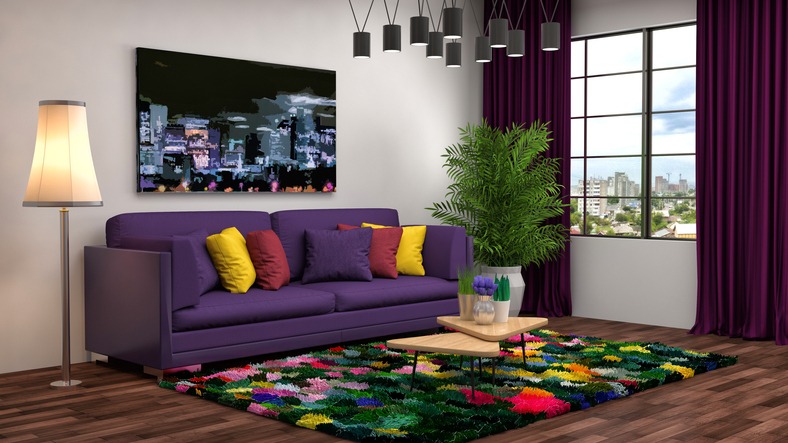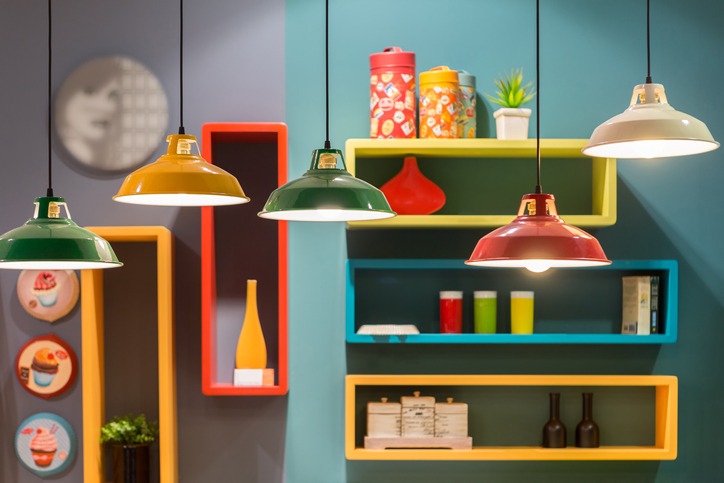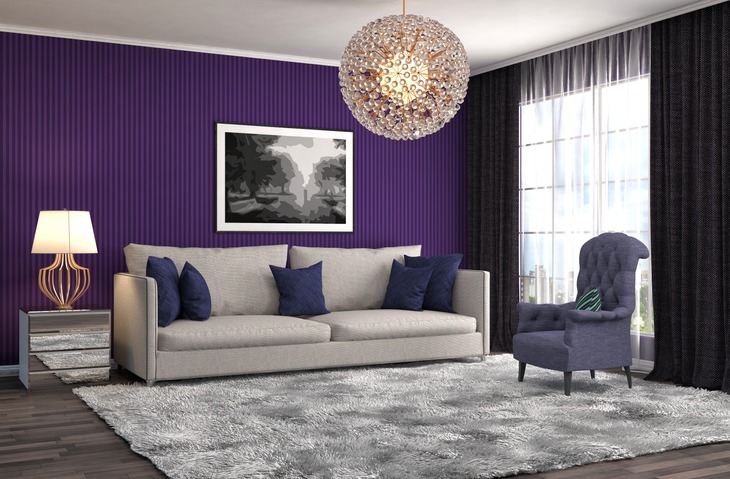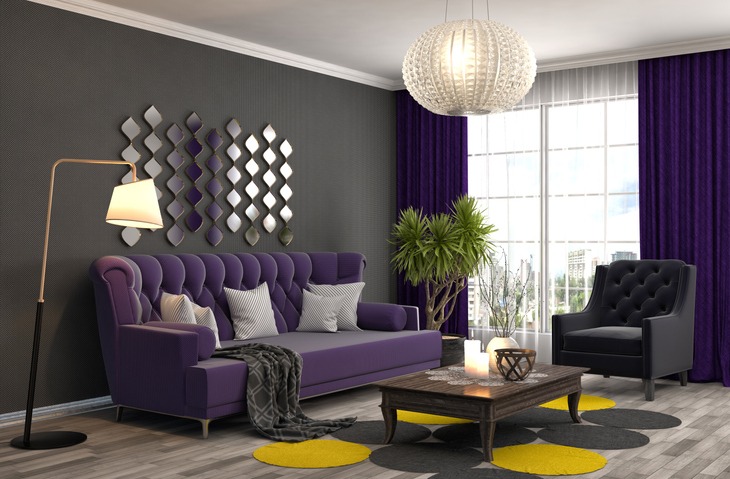Dive into the dazzling world of the Disco Era, a time when glitz, glamour, and a flair for the dramatic transformed not just music and fashion, but the very essence of interior design. At the forefront of this revolution was the legendary Studio 54, a nightclub that redefined luxury and creativity in space design. In this exploration, we unveil how Studio 54 and the disco movement left an indelible mark on design, infusing spaces with bold colors, innovative materials, and an atmosphere of uninhibited joy. Join us on a journey back in time to uncover the enduring influence of this vibrant era on today’s design landscape.
The Essence of Disco Design
The Disco Era, stretching from the mid-1970s to the early 1980s, was more than a musical revolution; it was a cultural phenomenon that infused its energy and style into the very fabric of interior design. This era, known for its lively spirit and emphasis on freedom and self-expression, brought forth an interior design aesthetic that was as bold and dynamic as the music and dance moves it accompanied.
Defining the Disco Aesthetic
The disco aesthetic was characterized by a few key elements: a love for glamour, a penchant for theatrics, and a desire to create spaces that transported people to an almost fantastical world. The design was unapologetically bold, blending the futuristic with the flamboyant. It was a visual representation of the era’s ethos – a celebration of life, diversity, and joy.
Key Elements in Disco Design
- Bold Color Palettes: The disco era broke away from the muted and earthy tones of the previous decades. Interiors were now drenched in vibrant colors – hot pinks, electric blues, purples, and greens. These colors weren’t just accents; they were often the main event, used expansively across walls, floors, and furnishings.
- Reflective Surfaces and Lighting: Mirrored balls, glossy finishes, and chrome details were quintessential. The play of light was crucial in disco design. Interiors often featured reflective surfaces that would bounce and amplify light, creating an energetic and dynamic atmosphere. This aspect was not just aesthetic; it was about creating an environment that mirrored the lively spirit of the times.
- Innovative and Diverse Materials: The use of unconventional materials was a hallmark of the era. Designers experimented with plastics, metallic fabrics, and glass, often in innovative ways. These materials added to the futuristic feel of the spaces, giving them a look that was ahead of its time.
- Organic and Geometric Shapes: Curved lines and geometric shapes were prevalent. Furniture and décor often featured rounded edges, circles, and ovals, juxtaposed with sharp, angular forms. This contrast added a visual intrigue and a sense of movement to the spaces.
- Textural Contrasts: Textures played a significant role in disco-era interiors. The combination of smooth, glossy surfaces with plush, luxurious fabrics like velvet and shag pile carpets created a tactile experience that was as varied as the era itself.
- Theatricality and Escapism: Above all, disco design was about creating an escape. Nightclubs, bars, and even homes were designed to be sanctuaries from the mundane, places where fantasy and reality merged seamlessly.
In essence, disco design was a celebration of excess and a rebellion against the understated. It was a reflection of a society embracing change and diversity, expressing itself through vibrant colors, innovative materials, and a design language that was unafraid to stand out and make a statement.
Studio 54: The Epicenter of Disco Design
Studio 54, more than just a nightclub, was a cultural phenomenon that encapsulated the essence of the Disco Era. It was a beacon of style, creativity, and extravagance, influencing not just the nightlife but the very heart of interior design during its heyday and beyond.
The Birth of a Cultural Icon
Opened in 1977 in New York City, Studio 54 was the brainchild of Steve Rubell and Ian Schrager. It quickly transcended its role as a mere nightclub, becoming a symbol of the era’s social and cultural dynamism. Studio 54 was where the elite, the artists, and the avant-garde converged, creating a melting pot of ideas, styles, and expressions. This convergence wasn’t just about the people; it was reflected in the club’s groundbreaking approach to design and aesthetics.
Design Elements of Studio 54
- Architectural Drama and Flexibility: Studio 54 was housed in a former opera house, and this architectural heritage was evident in its grandiose space. The club was designed to be an ever-evolving spectacle. Its interiors featured movable stages, rotating dance floors, and elaborate set pieces that could transform the space night after night.
- State-of-the-Art Lighting and Sound Systems: Innovation wasn’t just in the décor but in the technology too. Studio 54 was one of the first clubs to integrate sophisticated lighting systems, creating an immersive environment that enhanced the overall experience. The lighting wasn’t just functional; it was part of the spectacle, with beams cutting through the fog and mirrored surfaces to create a kaleidoscope of colors and shapes.
- Thematic and Theatrical Décor: The club was renowned for its thematic parties and events. From extravagant New Year’s Eve bashes to unique one-night-only themes, the décor of Studio 54 was a key element of its allure. This included everything from elaborate, larger-than-life sculptures to themed props that transformed the club into a fantasy land.
- Luxurious and Eclectic Furnishings: Velvet ropes, leather banquettes, and opulent lounges set against the backdrop of glittering disco balls created an environment of exclusivity and luxury. The club’s furniture and décor pieces were as eclectic as its clientele, ranging from art deco to modernist, each adding to the club’s unique character.
- Use of Mirrors and Reflective Surfaces: Mirrors played a pivotal role in the interior design of Studio 54. They were used not just for vanity but as design elements that amplified the space, reflected the dazzling lights, and added to the overall ethereal quality of the club.
- Integration of Art and Fashion: Studio 54 blurred the lines between a nightclub and an art installation. The club often featured works by renowned artists and designers, making it a living gallery of contemporary art and fashion.
Studio 54 wasn’t just at the heart of the disco design; it was a trendsetter, a benchmark of style and creativity. Its design elements – from the grandiose and theatrical to the innovative use of technology and art – created an atmosphere that was not just about entertainment but an immersive experience that defined an era.
The Influence on Residential and Commercial Spaces
The design ethos of Studio 54 and the broader disco era significantly influenced both residential and commercial interior design. This impact was not just a fleeting trend but marked a shift in how spaces were conceived, blending functionality with an unprecedented level of glamour and theatricality.
Transition into Homes
- Bold and Expressive Color Schemes: The vibrant color palettes of disco infiltrated home interiors, moving away from the subdued tones of previous decades. Walls, furniture, and accessories in homes began to feature bright, bold colors like deep purples, bright yellows, and electric blues, reflecting the era’s zest for life and expression.
- Innovative Use of Materials and Textures: Mirrored surfaces, which were emblematic of disco clubs like Studio 54, found their way into homes, often used in furniture pieces, wall decor, and accessories. Materials such as chrome, glass, and polished metals became popular in home furnishings, reflecting the era’s futuristic appeal.
- Statement Lighting and Accessories: Inspired by the dynamic lighting of disco clubs, homes began to incorporate more adventurous lighting choices. This included the use of neon lights, track lighting, and even the iconic mirror balls, transforming ordinary rooms into spaces that echoed the energy of a dance floor.
- Open and Flexible Layouts: Taking a cue from the spacious and versatile design of nightclubs, homes started to adopt more open layouts. This shift allowed for a more social environment, akin to the communal and inclusive atmosphere of disco venues.
Impact on Commercial Design
- Creating Experiential Spaces: Commercial spaces, especially bars, restaurants, and nightclubs, began to emulate the immersive experience of Studio 54. Interiors were designed not just for functionality but to create a total environment, where every element from lighting to furniture worked together to transport patrons to a different world.
- Emphasis on Glamour and Luxury: The luxury and opulence of Studio 54’s design were mirrored in commercial spaces. Rich textures, plush seating, and lavish decorations became more prevalent, aiming to provide an exclusive and upscale experience.
- Dynamic and Theatrical Interiors: Commercial designs started to incorporate the dynamism and theatrics seen in disco clubs. This included movable stages, elaborate lighting setups, and themed décor that could transform the space for different events or moods.
- Integration of Art and Branding: Following Studio 54’s lead in integrating art into its spaces, commercial establishments began to use art and unique design elements as a part of their branding. This approach helped businesses stand out and create a memorable identity.
In both residential and commercial realms, the influence of Studio 54 and the disco era was profound. It encouraged a departure from the conventional, embracing a more adventurous, expressive, and sometimes flamboyant approach to interior design. This era’s legacy is evident in the continued popularity of bold colors, reflective surfaces, and the idea of spaces as experiences, rather than just functional areas.
The Cultural and Social Influence
The Disco Era, epitomized by Studio 54, was not just a musical or fashion phenomenon; it represented a significant cultural and social shift that had a widespread impact, including on the realm of interior design. This period reflected and facilitated changes in social attitudes and cultural norms, which were then mirrored in the design elements of spaces both personal and public.
Reflection of Social Change
- Embracing Diversity and Liberation: The disco era, with its roots in diverse urban communities, was a celebration of inclusivity. Studio 54, known for its eclectic mix of guests, from celebrities to the everyday person, mirrored this inclusivity in its design. Interiors became spaces where barriers were broken down, and diverse styles merged, reflecting the era’s progressive attitudes towards race, gender, and sexuality.
- Expression of Freedom and Individuality: The bold and expressive design choices of the time were a manifestation of the era’s spirit of freedom and individuality. People were encouraged to express themselves, and this was reflected in their living spaces – homes became canvases for personal expression, showcasing unique styles, vibrant colors, and unconventional layouts.
- Shift Towards a More Open and Expressive Society: The openness and flamboyance of disco design were indicative of a broader societal shift. There was a movement away from the conservative and restrained styles of the past, mirroring the societal push towards more open, expressive, and liberal lifestyles.
Influence Beyond Borders
- Global Spread of Disco Design: The influence of the disco era and Studio 54’s iconic design spread far beyond the United States. Clubs around the world sought to replicate the glamour and excitement of Studio 54, leading to a global transformation in nightclub and bar design.
- Influence on International Home Decor Trends: The design trends popularized during this era also found their way into homes worldwide. The bold use of color, reflective surfaces, and statement lighting became global trends, redefining modern home aesthetics in various countries.
- Cross-Cultural Exchange of Design Ideas: The disco era facilitated a cross-cultural exchange of design ideas. Elements from different parts of the world were incorporated into disco-inspired spaces, creating a rich tapestry of styles and ideas. This exchange helped pave the way for more eclectic and globalized approaches to interior design in subsequent decades.
The cultural and social influence of the disco era, particularly as epitomized by Studio 54, was profound. It was a period that saw a significant shift in societal attitudes and values, and this shift was vividly reflected in the design of both public and private spaces. The era’s impact was not confined to its time but had lasting effects that reshaped how spaces were designed and experienced globally.
Evolution and Legacy
The disco era, with Studio 54 at its zenith, left an indelible mark on the world of interior design. Its influence extended well beyond its peak years in the late 1970s and early 1980s, evolving over time and leaving a lasting legacy that continues to shape contemporary design.
The Evolution of Disco Design
- Adaptation to Contemporary Tastes: As the exuberant spirit of the disco era gave way to the more subdued tones of subsequent decades, the design elements of this era were adapted to fit new tastes. The bold color palettes became more muted, and the reflective surfaces were used more sparingly, yet the essence of disco design – a sense of fun, freedom, and flamboyance – persisted.
- Integration with Modern Design Trends: Elements of disco design have been continually integrated into modern design trends. For example, the use of dynamic lighting has evolved with advancements in technology, finding its way into smart home systems. The open layouts popularized during the disco era have influenced contemporary architectural designs, promoting spaces that are both versatile and socially engaging.
- Reinterpretation in Various Design Movements: The core principles of disco design – such as boldness, theatricality, and the fusion of diverse styles – have been reinterpreted in various design movements over the years. From postmodernism to contemporary eclectic styles, echoes of disco’s influence can be seen in the emphasis on individuality and experimental use of materials and forms.
The Lasting Legacy
- Enduring Popularity in Nightlife Design: The nightlife scene continues to draw inspiration from Studio 54 and the disco era. Many modern clubs and bars incorporate elements like dramatic lighting, glamorous décor, and immersive environments that trace their roots back to the disco design ethos.
- Influence on Pop Culture and Media: The visual style and aesthetics of the disco era have remained a popular theme in movies, television shows, and fashion, showcasing its enduring appeal in pop culture. This continued presence in media helps keep the legacy of the disco era’s design relevant and admired.
- Educational and Inspirational Role: The disco era’s approach to design has become a subject of study in design and architectural courses, serving as an example of a bold and transformative movement. It continues to inspire new generations of designers and artists who find value in its fearless approach to creativity and expression.
- Resurgence in Contemporary Trends: There has been a resurgence of interest in vintage and retro styles, including elements of disco design, in contemporary interior decorating. This revival often blends nostalgia with modern sensibilities, creating spaces that are both reminiscent of the past and relevant to the present.
The evolution and legacy of the disco era’s design, as symbolized by Studio 54, demonstrate its significant and ongoing impact on the world of interior design. Its principles of bold expression, innovation, and theatricality continue to resonate, influencing both the aesthetics and the function of modern spaces. The disco era may have been a specific moment in time, but its design ethos has achieved a timeless quality, continually evolving and inspiring new interpretations.
Conclusion
The disco era, epitomized by Studio 54, marked a transformative period in interior design, characterized by its vibrant energy, bold colors, and unabashed glamour. This period redefined the creation and experience of spaces, extending its influence beyond the iconic nightclub. Studio 54, more than just a venue for nightlife, became a symbol of design innovation and societal change, its impact evident in both residential and commercial interiors. The era’s design elements, such as bold colors, integration of technology and art, and focus on immersive environments, were revolutionary and continue to inspire contemporary designers.
Reflecting on the disco era highlights its lasting impact on interior design, emphasizing creativity and innovation. The era’s principles, including diversity, theatrical flair, and boundary-pushing, remain relevant in today’s design trends, influencing new generations of designers and artists. The legacy of Studio 54 and the disco era serves as a reminder of the strong relationship between culture and space, illustrating how design can capture an age’s spirit, reflect societal changes, and leave a lasting impression on how we perceive and inhabit our environments.





